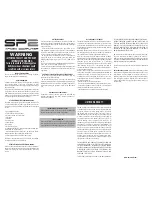
7 Transformer, Measurement and Data Structure
7.1 Introduction
There are many other instruments, that do a measurement and offer the possibility to store a
measured value. This is a very useful feature that saves a lot of time and eliminates errors of
writing down values by the operator. But still you have to do the handling and organization of
the measured data on your own. This may introduce one day mistakes into your data set,
especially when several measurements will be taken at once and sorted after words, or if
several operators use the same storage device.
7.2 How it works
With TR-MARK III we offer another powerful tool, that increases comfort in handling many
transformers which are tested time after time. You do not have to sort a stored measurement
anywhere. Once a transformer, or let’s say a transformer profile, is created, several
measurements directly can be attached to it.
The profile or transformer contains the general (header) data. An attached result contains the
measurement of all transformer phases. Or to define it more exactly:
A transformer / profile contains:
Number of winding systems
Type of winding systems
Test voltage
Rated voltages (primary, secondary, tertiary)
Name plate info (name, serial number, location, manufacturer, type and remarks)
Max. ratio deviation and standard (ANSI, IEC, Australian,…)
A measurement contains
Measured results of all phases (ratio, deviation, current, phase angle)
Date and time
Operator name
What you usually will do is creating a new transformer (profile), do a measurement and store
it. In this case the profile and the actual measurement will be stored.
Or you load an existing transformer, do a measurement and store it. In this case, the new
measurement will be attached or let’s say stored with the loaded transformer.
Please find this illustrated on the following page.
NOTE
There is no difference for you between saving a transformer or attach
the actual measurement. Both is done with the button ‘save’ in Main
screen. See chapter ‘8.1.2.3 Print and Save, Turns Ratio or Voltage
Ratio’
90100-2.20 Instruction Manual TR-MARK III 250V
Page 18 of 68
















































